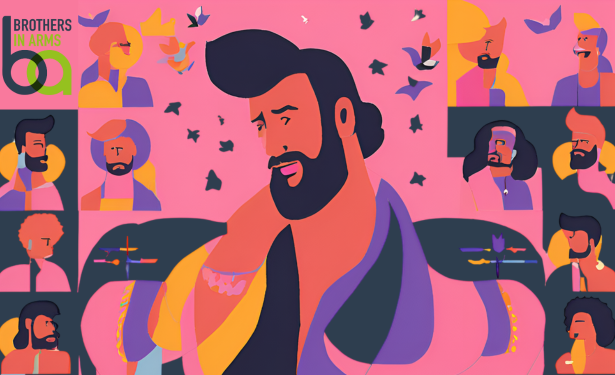Beyond the Macho Man: Exploring Positive Masculinity
Date: Wednesday 01 Jan 2025
The phrases “man up,” “boys don’t cry,” and “be a man” have long been ingrained in our culture, but what do they truly signify in today’s society? These expressions are deeply rooted in traditional masculinity, which often emphasizes strength, stoicism, and success. While these attributes can be beneficial, adhering to them rigidly can adversely affect a man’s mental and emotional health, as well as his relationships.
This is where Positive Psychology and Positive Masculinity (PPPM) come into play. This contemporary perspective on masculinity shifts the focus from merely addressing what’s wrong with men to enhancing their existing strengths. It poses the question, “What’s right with you as a man?”.
Rather than simply instructing men on what not to do, PPPM emphasizes the positive traits that men already possess and encourages their further development. Some examples include:
-
Male Relational Styles: Men often connect through shared activities rather than deep conversations, bonding over experiences like gym workouts, sports teams, or music bands.
-
Male Ways of Caring: Men typically express care by protecting loved ones and taking action, such as fixing a car or defending a friend.
-
Generative Fatherhood: Being a good father involves more than financial support; it requires emotional presence and guidance in helping children grow into good individuals.
-
Male Self-Reliance: While men are often taught to solve their own problems, positive self-reliance also entails knowing when to seek help and supporting others in need.
-
The Worker/Provider Tradition: Hard work and providing for one’s family can instil a sense of pride and purpose.
-
Male Courage, Daring, and Risk-Taking: Men are often drawn to challenges, whether in protecting others or pushing their limits in sports, with PPPM advocating for responsible risk-taking.
-
The Group Orientation of Men: Men frequently thrive in group settings, collaborating towards common goals, which fosters a sense of belonging.
-
Humanitarian Service: Many men find fulfilment in helping others, whether through volunteering or simply offering assistance.
-
Male Humour: Humor serves as a powerful tool for connection, stress relief, and friendship-building.
-
Male Heroism: Everyday heroes exist in men who work hard, raise families, and positively impact their communities.

However, It's Complicated:
Research indicates that some traits traditionally associated with masculinity are increasingly expected of women, such as being dependable and compassionate. Consequently, societal expectations of men may not align with their self-perceptions of positivity.
Moreover, certain aspects of positive masculinity may simply represent healthier expressions of traditional masculinity. For instance, while society values success, an unyielding pursuit of it can be detrimental. PPPM encourages men to strike a balance between ambition and well-being.
Why Does PPPM Matter?
Emphasizing positive masculinity can assist men in:
-
Building stronger relationships
-
Feeling more confident and fulfilled
-
Managing stress and challenges in healthier ways
-
Becoming better fathers and role models

PPPM is an evolving field of research that is reshaping the dialogue surrounding men and masculinity, focusing on recognizing and enhancing the strengths men already possess.
What Does Positive Masculinity Look Like?
Positive masculinity promotes actions that lead to better outcomes for men and their communities, emphasizing responsibilities and caring for others.
Key steps include practising “action empathy,” building self-reliance and respecting women by avoiding harm and sexist behaviour.
Humour should uplift others, and true strength involves hard work, caring, and knowing when to seek help, creating a safe space for expression.
Who Are Positive Male Role Models?
Positive male role models don’t have to be celebrities; everyday influencers like family and teachers can counter toxic masculinity and shape young males.
Positive role models inspire good habits and help set goals, guiding young boys through example.
How to Rethink What It Means to Be Masculine
Strategies include accepting help, focusing on character development, and allowing others to exist without judgment.
Show a range of emotions to young men, teaching them to understand and express their feelings appropriately.
How to Be a Positive Male Role Model
Identify positive role models for young males, emphasizing growth and character development.
Care about young people, acknowledge their efforts and lead by example.
By embodying these principles, men can redefine success beyond what they see from famous influencers online. They can learn that success also means being a good friend and teammate while embracing positive masculinity. By following this positive example, they may become positive male role models themselves, perpetuating the cycle.
Learn more about PPPM here: https://positivepsychologynews.com/news/bridget-grenville-cleave/2010102714017
ABOUT BLETHR:
Blethr, is a digital platform designed to support men's mental well-being by providing a safe space for self-exploration and personal growth. In the context of the article "Beyond the Macho Man: Exploring Positive Masculinity," Blethr aligns perfectly with the concept of positive masculinity by:
- Challenging Traditional Masculine Norms: Blethr encourages men to break free from societal pressures that discourage emotional expression and help-seeking. By providing a confidential and non-judgemental environment, it allows men to explore their emotions and challenge self-limiting beliefs.
- Promoting Self-Mastery and Personal Growth: Blethr empowers men to take a proactive approach to their mental health by facilitating self-discovery and personal development. The platform's conversational channels guide users through introspection, helping them understand their feelings and develop strategies for managing them.
- Fostering Positive Action: Blethr doesn't just encourage talking; it promotes positive action. By helping men identify their strengths and aspirations, the platform guides them towards taking control of their well-being and achieving their goals.
The article emphasizes the importance of moving beyond restrictive masculine stereotypes and embracing a more holistic view of manhood. Blethr provides a practical tool for men to engage in this process, offering support and guidance on their journey towards positive masculinity.
Learn more about Blethr here: https://www.brothersinarmsscotland.co.uk/why-men-should-use-blethr/

